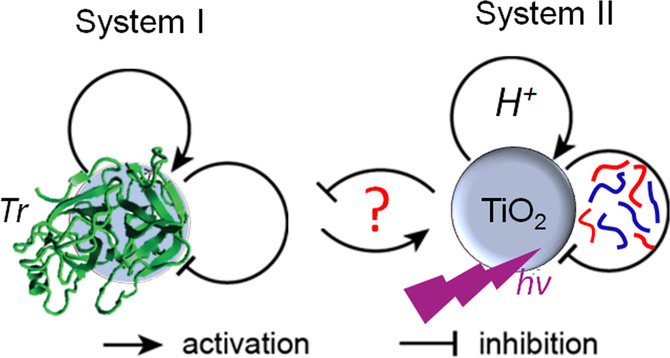Authors: Lanchuk Y.V., Nikitina A.A., Nadzeya Brezhneva, Ulasevich S.A., Sergey N. Semenov,

ChemCatChem, 2018, 10 (8), pp 1798-1803
Abstract
Bioinspiration is an attractive way to develop new robust chemistry. In biological cell, chemical reactions form complex networks (e.g. signaling and metabolic) that communicate with each other and control cell division, growth, and interaction with environment. Thus, combining multiple chemical subsystems into a single network is an attractive way to design a chemical system with new functions. In this paper, we combined two chemical networks: i) a photocatalytic oxidation/ reduction on TiO2particles, and ii) an autocatalytic formation of enzyme trypsin (Tr) from its precursor trypsinogen (Tg). Moreover, we put the combined network in hydrogel media, where all reactions are coupled to diffusion, to achieve a photocatalytic regulation of an autocatalytic wave. We showed that TiO2 particles affected the fluorescence quenching of Tr, but, without irradiation, had no effect on the autocatalytic formation of Tr. With irradiation, however, a cascade of photocatalytic reactions causes media acidification that suppress the autocatalytic formation of Tr and propagation of the autocatalytic wave.
DOI: 10.1002/cctc.201702005
Read Full:
https://doi.org/10.1002/cctc.201702005